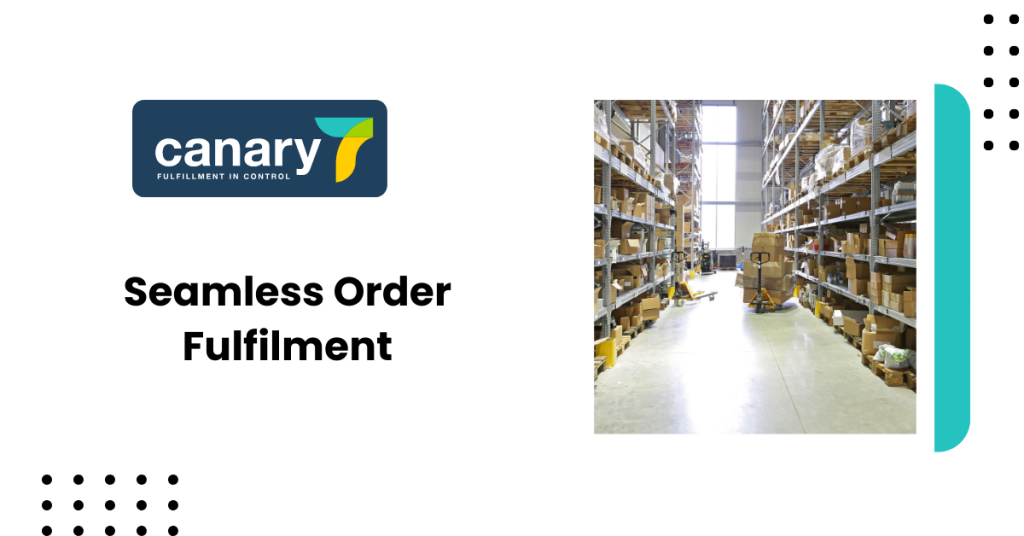Warehousing is at the core of any successful supply chain, and in 2024, the need for modern, efficient warehouses is greater than ever. With eCommerce sales projected to grow by 15.1% annually, warehouses are under increasing pressure to streamline operations and meet customer demand. For busy operations managers juggling multiple tasks, implementing innovative technology like the Best Warehouse Management Software and leveraging data-driven solutions is essential for staying competitive.
This guide outlines five essential features every modern warehouse must have to optimise operations, reduce errors, and improve customer satisfaction.
1. Inventory Management Software (WMS)
A robust Warehouse Management System (WMS) is the cornerstone of any modern warehouse. It digitises inventory management, streamlining processes and providing real-time visibility into stock levels, locations, and movements. In 2024, the best Warehouse Management Systems offer advanced analytics, cloud integration, and sustainability features.

Key features and benefits in 2024:
- Advanced analytics and forecasting: WMS now leverages AI and machine learning to predict demand patterns, optimise stock levels, and prevent stockouts or overstocking.
- Enhanced integration: Seamless integration with ERP systems, e-commerce platforms, and transportation management systems (TMS) ensures a smooth flow of information across the supply chain.
- Mobile and cloud-based solutions: Cloud-based WMS solutions are increasingly accessible on mobile devices and cloud platforms, enabling remote access and real-time decision-making.
- Sustainability features: Many modern WMS incorporate tools for tracking carbon emissions, optimising routes for reduced fuel consumption, and managing sustainable packaging materials.
Case Study: Take the case of E-Catering, a UK-based company that integrated Canary7’s WMS into their warehouse operations. By leveraging real-time inventory insights and automated stock updates, they reduced order processing time by 20%, improved picking accuracy by 15%, and eliminated 90% of manual stocktaking errors. Their transition to a digital-first approach allowed them to scale during peak eCommerce seasons without delays.
2. Stock Control System
Effective stock control is vital for maintaining optimal inventory levels, preventing stockouts, and minimising carrying costs. Modern warehouses need more than just maintaining inventory; they should focus on optimising stock control solutions to save time and money.
Key features and benefits in 2024:
- ABC analysis: Prioritise inventory items based on their value and usage frequency to allocate resources effectively.
- RFID and barcode technology: Automate inventory tracking and reduce manual errors.
- Demand forecasting: Utilise historical data and predictive analytics to anticipate future demand and adjust inventory levels accordingly.
Example: A warehouse that implemented RFID technology for stock tracking reduced manual counting time by 70% and improved inventory accuracy to 99.5%. By incorporating these innovations, warehouses can ensure they always have the right products on hand, reducing the risks of overstocking or stockouts.
3. Seamless Order Fulfilment
Efficient order fulfilment is critical for meeting customer expectations and driving sales. Modern warehouses must be equipped to handle multichannel integrations and automated processes to streamline this area.

Key features and benefits in 2024:
- Automated picking and packing: Use technologies like pick-to-light systems, voice-directed picking, and automated packing stations to improve efficiency.
- Multi-channel order management: Handle orders from various channels (e.g., online, in-store, mobile) seamlessly through a centralised system.
- Returns management: Streamline the returns process, reducing costs and improving customer satisfaction.
Case Study: A warehouse that implemented automated picking technology increased picking productivity by 30% and reduced order processing time by 25%. This streamlined approach reduces bottlenecks, improves customer satisfaction, and lowers operational costs.
4. Real-Time Inventory Tracking
In 2024, real-time inventory tracking is no longer a luxury but a necessity for modern warehouses. Real-time visibility into inventory levels allows operations managers to maintain accurate stock records, prevent stockouts, and optimise replenishment processes.
Key features and benefits in 2024:
- RFID and IoT sensors: Track the movement and location of inventory items in real-time.
- Mobile barcode scanning: Enable warehouse staff to scan items and update inventory records instantly.
- Cycle counting: Conduct frequent cycle counts to verify inventory accuracy and identify discrepancies.
Case Study: Bathshack, a bathroom products retailer, implemented real-time tracking in their warehouse. Their WMS records every transaction as soon as an item is scanned, ensuring that stock data is always up-to-date. As a result, they reduced stock discrepancies by 50% and improved order fulfilment accuracy to 98%.
5. Advanced Transaction Management
Modern warehouses must go beyond basic order placement to optimise their transaction processes. By improving transaction management, businesses can enhance the overall customer experience and reduce the risk of manual errors.
Key features and benefits in 2024:
- Integrated payment gateways: Offer multiple payment options, including credit cards, digital wallets, and mobile payments.
- Automated invoicing: Generate invoices automatically based on sales orders, reducing manual errors.
- CRM integration: Track customer interactions, preferences, and purchase history to provide personalised service.
- Mobile invoicing: Enable customers to receive and pay invoices electronically on their mobile devices.
Case Study: A warehouse that implemented automated invoicing reduced processing time by 80% and improved payment accuracy. Such advancements allow for a smoother transaction flow and better customer service.
Current Trends in Warehouse Management

In 2024, warehouse management is heavily influenced by the following trends:
- Sustainability: Green logistics are on the rise. With 65% of consumers prioritising eco-friendly brands, warehouses are increasingly adopting renewable energy, reducing packaging waste, and optimising storage to reduce environmental impact. Studies show that green warehouses can cut operating costs by 20%.
- Automation and Robotics: More warehouses are adopting automation to improve operational efficiency. By 2024, over 60% of warehouses are expected to implement some form of automation, such as robotics for picking and packing.
- Digitization: Warehouse Management Software (WMS) is now equipped with AI-driven analytics and real-time inventory tracking. Digitization allows for better forecasting, inventory planning, and operational efficiency.
Frequently Asked Questions
Q: How can warehouse automation help with labour shortages?
A: Automation helps reduce reliance on manual labour by handling repetitive tasks like picking, packing, and sorting. This not only alleviates the effects of labour shortages but also boosts efficiency and reduces errors.
Q: What are the biggest cost-saving technologies in warehouses today?
A: WMS software, real-time inventory tracking, and automation systems are some of the most impactful cost-saving technologies. They reduce manual errors, lower labour costs, and optimise stock levels to prevent costly overstocking and stockouts.
Q: How can my warehouse become more sustainable?
A: You can implement green warehousing strategies like energy-efficient lighting, minimal packaging waste, and optimised delivery routes. Many warehouses are now investing in carbon-neutral practices to appeal to eco-conscious consumers.
Wrap Up:
In 2024, modern warehouses must embrace technology and innovation to remain competitive. By implementing features like Warehouse Management Software (WMS), stock control systems, real-time inventory tracking, and automated fulfilment processes, you can optimise your operations, reduce costs, and improve customer satisfaction. Keep an eye on key trends like sustainability, automation, and digitization to stay ahead of the curve and ensure your warehouse operates at its full potential. Also, for more information and solutions for your business management, you can check out Canary7 today. Feel free to contact us!

Colleen Ballantine
Author
UPDATED ON: 7th May 2024
Colleen is a marketing specialist at Canary7, writing in-depth blog content on warehouse management, inventory control, and logistics. With extensive industry experience, Colleen focuses on delivering informative and insightful posts
Subscribe to get latest posts straight in your inbox.